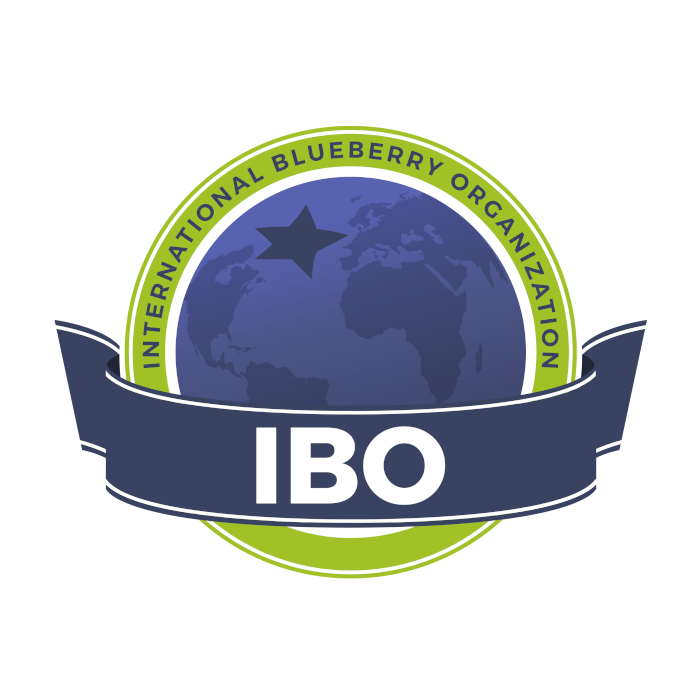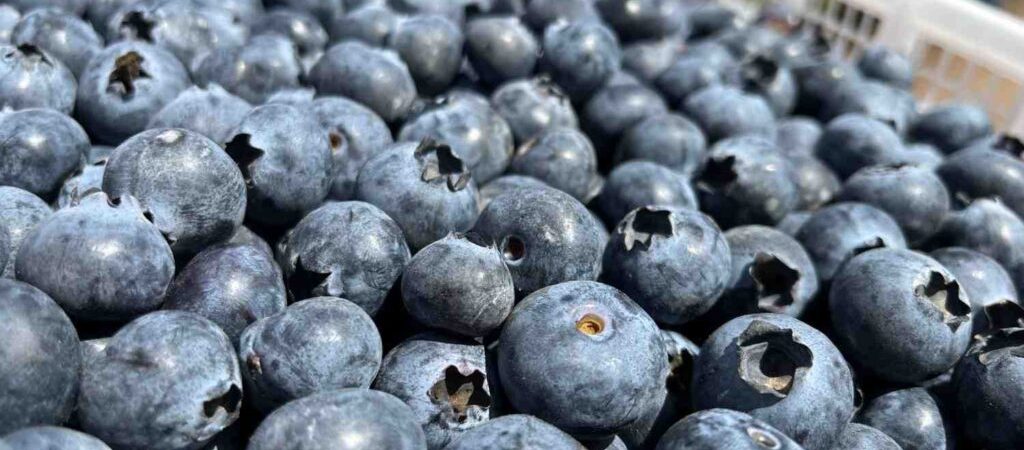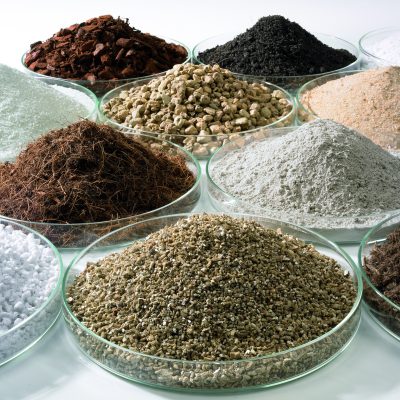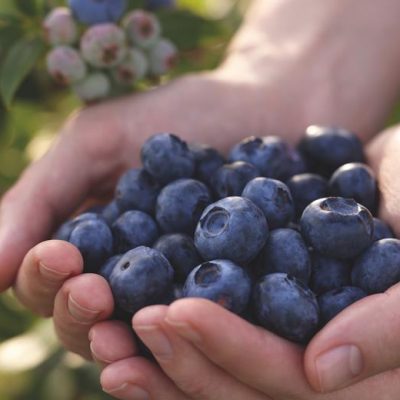How does blueberry variety protection help breeders keep improving the sector and staying competitive in the markets
- . May 2025

At IBO, we continue to explore topics of great interest to our industry. For this reason, we contacted Yolanda Huerta, Vice Secretary-General of the International Union for the Protection of New Varieties of Plants (UPOV), to delve deeper into the importance of variety protection, the requirements for registering a variety, the duration of protection, and its advantages in the event of a dispute over its illegal commercialization.
The International Union for the Protection of New Varieties of Plants was established in 1961 by the International Convention for the Protection of New Varieties of Plants, commonly referred to as the UPOV Convention.
UPOV’s mission is to provide and promote an effective system of plant variety protection that encourages the development of new plant varieties for societal benefit. The UPOV Convention also provides the basis for members to encourage plant breeding by granting breeders of new plant varieties an intellectual property right called the breeder’s right.
How many blueberry varieties have been protected under the UPOV system, and in which countries?
As of now, based upon the information provided by UPOV members in our PLUTO Plant Variety Database (https://pluto.upov.int/login1 ), approximately 1,387 plant variety protection titles have been granted for about 560 distinct blueberry varieties under the UPOV system.
The top three UPOV members leading in blueberry variety protection are the United States, Chile, and the European Union. Completing the top 10 are Mexico, Uruguay, Peru, Ukraine, the United Kingdom, the Netherlands, and Poland.
What are the requirements for registering a new blueberry variety under UPOV regulations?
To protect a new blueberry variety in accordance with the laws of UPOV members, the variety must meet four key criteria, often summarized by the acronym DUS + N. These criteria are:
- Distinctness: This refers to the variety’s ability to be distinguished from any other known variety in any country.
- Uniformity: The variety must be sufficiently uniform in its relevant characteristics.
- Stability: The variety must remain stable in its relevant characteristics after repeated propagation.
- Novelty: This means that the variety has not been commercialized with the consent of the breeder beyond the grace periods.
In addition to compliance with the above conditions of protection, a variety also needs a suitable denomination. This variety identifier should be consistent across all UPOV members.
How long does blueberry variety protection last under the 1991 UPOV Act?
Under the UPOV 1991 Act, plant variety protection lasts a minimum of 25 years for trees and vines, and 20 years for other plants. This period starts from the date of the grant. Since blueberries are not considered trees or vines, the protection for a new blueberry variety lasts at least 20 years.
Why is it important to educate breeders about the importance of protecting blueberry varieties?
Successful breeding requires great skill and knowledge. It takes a long time to develop a successful plant variety, typically 10 to 15 years, in the case of many plant species. Yet, not all new plant varieties are successful, and even when the varieties show significant improvements, changes in market requirements and trends may render the possibility of a return on investment unlikely. Generally, however, plant breeding results in the availability of varieties with increased yields and improved quality, benefiting society.
Sustained and long-term breeding efforts are only worthwhile if there is a chance to be rewarded for the investment made. To recover the costs of this research and development, the breeder may seek protection to obtain exclusive rights for the new variety.
At the same time, new varieties, once released, can often be easily reproduced by others, and the costs for multiplying plants are low. Breeders of those varieties are thus deprived of the fair opportunity to recover their investment in variety development and commercialization. That’s where plant variety protection comes in—it gives breeders exclusive rights, encouraging innovation and ensuring society benefits from better, more resilient crops. Adequate protection and enforcement play a key role in protecting all the stakeholders in the value chain that are investing in, or benefiting from protected varieties (e.g., farmers, growers, exporters, food industry, consumers).
For blueberries, understanding and utilizing variety protection helps breeders continually improve the sector while remaining competitive in national and international markets.
Are there any restrictions on the use of seeds or cuttings of protected blueberry varieties by farmers?
Under the “breeder’s exemption” in the UPOV Convention, the authorization of the breeder for the use of protected varieties for breeding purposes is not required. The authorization of the breeder is, however, required for the selling of the propagating material (e.g., cuttings in the case of blueberries) of a protected variety by any person.
Farmers or growers could sell the harvested crop (e.g., the fruits), in this case, the actual blueberry fruits, from protected varieties if the cuttings were obtained with the breeder’s authorization.
There is also a compulsory exception for private, non-commercial use. For instance, the propagation of a protected variety by a subsistence farmer exclusively to produce a food crop to be consumed by that farmer and the dependents of the farmer may be considered to fall within the meaning of acts done privately and for non-commercial purposes.
Finally, it is worth noting that the UPOV system does not regulate varieties that are not covered or no longer covered by plant variety protection. Farmers or growers can choose to grow protected or non-protected varieties. The UPOV system encourages the development of new varieties, which provides farmers with new choices.
How does variety protection influence the availability of new, improved blueberry varieties on the market?
Variety protection plays a crucial role in enhancing the availability of new and improved blueberry varieties for growers and consumers worldwide by providing legal and economic incentives for breeders to invest in long-term innovation. Through the UPOV system, breeders gain exclusive rights over their varieties, which helps them recoup the significant time and financial resources required for their development and commercialization.
This protection encourages the development of blueberry varieties with traits that directly respond to market and environmental demands, such as:
- Extended harvest periods, allowing growers to avoid peak-season competition;
- Greater efficiency in cultivation, with reduced water, nutrient, and pesticide needs;
- Improved heat tolerance, helping maintain fruit firmness and transport quality;
- Longer shelf life, supporting global export logistics;
- Disease resistance, enabling the growth of organic blueberries;
- Suitability for frozen processing, broadening commercial uses.
Moreover, plant variety protection facilitates public-private partnerships and fosters business models such as licensed production and club varieties, enabling structured access to elite varieties under agreed terms, and supporting sustainable value chains.
What recommendations does UPOV make to countries to balance breeder protection with the need for access to varieties for local production?
Plant variety protection under the UPOV Convention is designed to both encourage innovation and support equitable access. UPOV’s work includes several mechanisms to achieve this goal:
- UPOV plays a key role in setting international standards for plant variety protection in the legal, technical, digital, and training areas.
- By fostering access to climate-resilient and quality varieties, the framework under the UPOV Convention supports both productivity and sustainability across the agricultural and horticultural value chain.
- The role of UPOV as the international standard-setting organization provides clarity, transparency, and stability, favoring sustainable and long-term collaborations.
- Advances in biological sciences and DNA-based information provide opportunities for enhanced cooperation and efficiency gains in variety examination and identification, potentially reducing time and other resources required for plant variety protection and enforcement.
- Digital tools, such as UPOV e-PVP (https://www.upov.int/upovepvp/en/index.html), provide services to UPOV members and stakeholders in a manner that enhances the efficiency of the global UPOV system and facilitates a “leveling-up” in capacity within UPOV.
- UPOV promotes a harmonized yet adaptable system that supports both breeder innovation and the sustainable development of agriculture and horticulture in diverse national contexts.
Are there any cases of legal disputes related to the intellectual property of blueberry varieties?
UPOV is committed to raising awareness of enforcement matters related to the specific nature of plant varieties and the impact of inadequate or ineffective PBR enforcement on the development of the agricultural or horticultural sectors. In that regard, UPOV members and observers report on legal cases. For example, Australia-based Mountain Blue Orchards won a legal battle over the unauthorized propagation, production, and sale of its blueberry variety Ridley 1111 (see Order_JUSTICEGREENWOOD_DOC4).
Are any of these cases of legal disputes related to the intellectual property of blueberry varieties?
We have received information from organizations representing breeders indicating that there are cases of legal disputes related to the intellectual property associated with blueberry varieties. Some cases have been solved by negotiations between the parties.
How has the protection of blueberry varieties impacted the industry and local producers in developing countries?
Some blueberry breeders have reported that plant variety protection of blueberry varieties in developing countries has facilitated the introduction of the crop more easily. The availability of PVP protection has contributed to the trust that breeders need to produce and commercialize new blueberry varieties in new countries. One breeder reported that in countries where there is no adequate protection, commercialization occurs only with a small number of trusted parties, in a highly controlled manner. Therefore, it has an impact on the industry and local producers in developing countries, as there is no supply of elite blueberry genetics.
What measures are in place to ensure that blueberry variety protection does not limit access to plants for small farmers?
New blueberry varieties are not typically grown by small-scale or subsistence farmers due to the significant investment required. Numerous blueberry varieties are publicly available that can be grown by farmers without requiring authorization from breeders.
Furthermore, there are different business models that enable small-scale farmers to access newer, protected varieties. Some breeders employ different business models with varying tiers of services, allowing them to maintain a lower price point for smaller growers while still offering improved, protected genetics. Due to market dynamics and the ever-increasing consumer demand for blueberries, all types of farmers, including small farmers, can benefit from investing in protected blueberry varieties.
Could you share with us the latest update from UPOV, including which countries have signed and which have not? For instance, Mexico has not yet adhered to UPOV 1997—what does it mean for a country to be bound by or not bound by this updated convention?
With the accession of Nigeria on March 27, 2025, UPOV has 80 members covering 99 States (see https://www.upov.int/members/en/). Forty-six countries and two intergovernmental organizations are in contact with UPOV regarding membership matters. Now, it is only possible to become a UPOV member by acceding to the 1991 Act of the UPOV Convention.
The 1991 Act is the latest Act by which 61 States and two organizations (the European Union and the African Intellectual Property Organization) are bound. While the 1978 Act still binds 17 States, the applicable legislation might contain provisions from the 1991 Act (see UPOV Lex https://upovlex.upov.int/en/legislation). Mexico joined UPOV on August 9, 1997, under the 1978 Act and has not yet adhered to the 1991 Act.
The 1991 Act introduced several key enhancements, including:
- Expanded Scope of Protection: Protection is provided for all plant genera and species, whereas the 1978 Act allows members to limit protection to specific ones. 14 of the 17 States bound by the 1978 Act apply their laws to all plant genera and species.
- Increased duration of Protection: It provides a minimum of 20 years of protection and 25 years for trees and vines, compared to 15 and 18 years, respectively, under the 1978 Act.
- More comprehensive Breeder’s Rights: the 1991 Act specifies more acts that require the breeder’s authorization in respect of the propagating material of a protected variety and, under certain conditions, in respect of the harvested material. It is also possible to extend the protection to products made directly by the harvested material, also under certain conditions. The protection was also extended to certain varieties, including essentially derived varieties.
- More clarity on the exceptions to the Breeder’s Right: The 1991 Act specifies that the breeder’s right does not extend to acts done (1) privately and for non-commercial purposes; (2) for experimental purposes; (3) to breed other varieties; (4) and an optional exception for farm saved- seed, under reasonable limits. Under the 1978 Act, only the breeder’s exemption is specified.
In what ways can IBO members support the activities and mandate of UPOV?
IBO can play a vital role in supporting the activities and overarching mandate of UPOV, which is to provide and promote an effective system of plant variety protection that encourages the development of new plant varieties for the benefit of society. Support from IBO members can take various forms, including:
- Raising awareness of the benefits of PVP in enhancing food security, agricultural resilience, and sustainable development.
- Information sharing and research support, by collaborating on studies, exchanging data, and contributing to a better understanding of the role of PVP in driving innovation and its socioeconomic impact.
In addition, IBO can help promote the dissemination of success stories and lessons learned, further highlighting the value and practical benefits of effective plant variety protection systems.
Could you provide an example from UPOV of one or two countries that have recently joined, and how this has impacted their role as producers or exporters?
Numerous success stories highlight the benefits of UPOV membership, including its impact on the roles of producers and exporters. Take the case of Peru, for example, where more than sixty new varieties of blueberries have been protected since the country joined the UPOV. The Peruvian Ministry of Agriculture and Irrigation also reported that blueberry production grew 17% during the pandemic. See here: https://www.bioeconomia.info/2020/07/20/peru-se-consolida-como-primer-exportador-de-arandanos/
In New Zealand, a 2022 study found that kiwifruit exports generated NZD 2.9 billion in revenue, making it the country’s most valuable single horticultural export. Remarkably, 60% of that revenue is attributable to plant variety rights (PVR)-protected cultivars—benefiting the entire value chain, from breeders and licensed growers to transporters, packhouses, marketers, and retailers.
Since Kenya joined UPOV in 1999, data from the Horticultural Crops Development Authority (HCDA) show that the country’s cut flower exports have grown significantly, from USD 57 million in 1998 to approximately USD 828 million in 2020.
A Study on the impact of plant variety protection in Viet Nam after its tenth anniversary of UPOV membership in 2017 (see https://www.upov.int/about/en/benefits_upov_system.html) provides that the Gross Domestic Product (GDP) added upstream and downstream (value chains) amounts to USD1.5 billion, meaning that the total added value to the economy of Viet Nam amounts annually to USD5 billion (>2.5 percent GDP).
Additional success stories and testimonials from UPOV members can be explored through a series of benefit videos available on the UPOV website (https://www.upov.int/about/en/benefits_upov_system.html), which showcase the tangible impact of PVP in various regions around the world.
02.05.2025
This is an IBO exclusive content.







